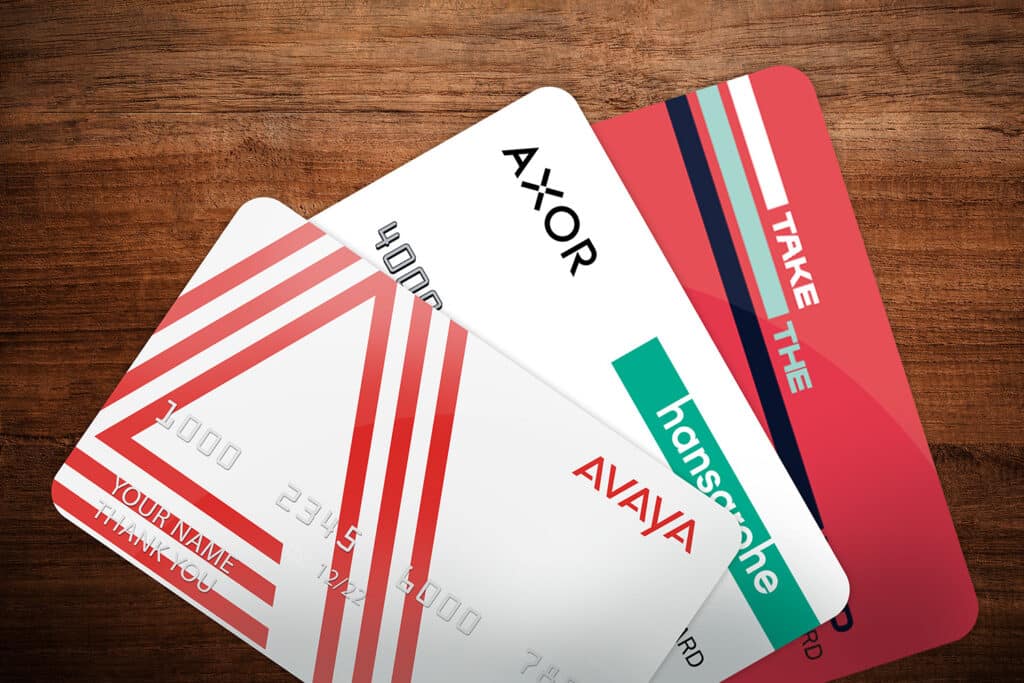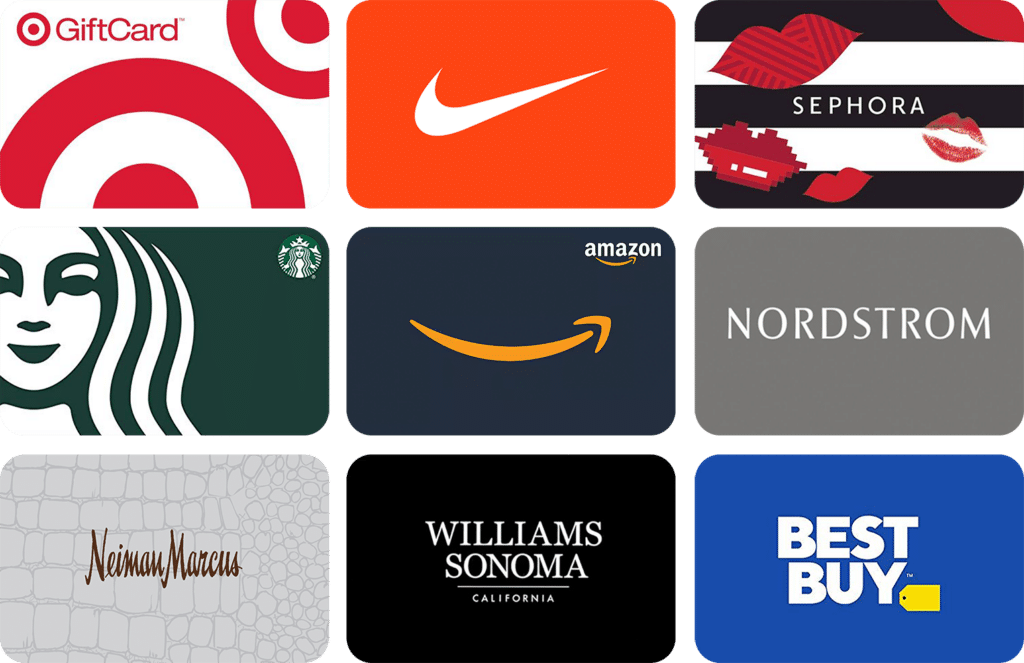Gift cards and prepaid cards have become increasingly popular due to the simplicity, availability, and variety offered at retail stores and through incentive companies. Employees and salespeople enjoy receiving a gift card to dine, shop, or spend as cash. Before deciding on what type of card to reward incentive participants, lets clarify some card terminology.


Fully custom plastic
A prepaid card is defined as a Visa or MasterCard that is pre-loaded with reward funds and can be used similar to a debit card. Technically, they are not debit cards, even though many corporate users mistakenly use that phrase, because a consumer’s bank account does not back the balance. Other issuers include American Express and Discover, but Visa and MC dominate the incentive market by offering wider redemption at more locations. Of course, prepaid cards maximize the freedom for participants to spend the funds wherever they prefer.
Incentive veterans will use a peculiar phrase, “open loop,” because the prepaid cards can be used at any retail store that accepts Visa or MC. The open-loop cards are better for consumer rebates and channel partner incentive programs.
However, for internal employees, many HR and Sales Operations executives dislike them because they can become confused with compensation, making it difficult to start and stop incentive promotions without adverse reactions.
An ample opportunity with prepaid cards that often gets overlooked is “wallet branding” – adding the sponsoring company’s logo to the plastic card to reinforce their brand. An incentive company can even fully customize the entire plastic. For long-term programs, reloadable prepaid cards are another option, where additional funds can be loaded on a regular cycle, rather than participants receiving new plastic each time.
Unlike prepaid cards with universal acceptance, gift cards are redeemed only at a single merchant (or list of merchants). Hence, incentive veterans call these “closed-loop” cards.
Recent studies report the most popular gift cards are Amazon, Starbucks, Target, and dining cards. Gift cards from high-end retailers, such as Nordstrom, William Sonoma, or Best Buy, are super for aspirational sales contest prizes. Is the audience mostly male? Consider BassPro, Lowes, Nike, or Best Buy. For the ladies? Sephora, SpaFinder, or Tiffany’s!
Amazon is the most popular gift card – but is it closed-loop or an open loop? While it’s a theoretical debate, it matters because corporate sponsors hope recipients are redeeming for a memorable, meaningful prize and not forgettable commodities.


An eGift card is defined as a gift card that is sent digitally instead of physically. eGift cards are emailed with a unique code that can be entered in the retail store point-of-sale system, scanned from a smartphone, or submitted online on their website. Prepaid cards can be delivered electronically too, and they are typically called “virtual cards.”
The apparent benefit of eGift is immediacy. Redeem today and shop today. eGift cards are also a good option for incentive programs with large international audiences, where shipping and tracking can be challenging.
Whatever the card preference, Brightspot has excellent partnerships and access to over 150 types of cards that can be accessed through our Ignite card catalogs. For the pros and cons of each award type, see the Awards Matrix.
The #1 shocking fact is 69% of businesses are purchasing gift cards at retail. Imagine the value of a mid-level manager slipping out of the office to drive to a grocery store or drug store to buy a stack of gift cards – and trying to organize all those annoying paper authorization receipts. Oops! The trip to the store turns into trips because the first store did not have enough cards. More lost productivity—more hidden costs.
Sales & Marketing Management magazine reported a whopping 77% of respondents to their gift card study list their job function as sales, marketing, or executive management. Therefore, it is high-dollar managers and executives who are wasting their valuable time plodding between Safeway, Walgreens, and Target with a shopping list of gift cards!
Once upon a time, a prospect was asked a thought-provoking question to uncover pain and then solve it with the preferred solution – “is it annoying driving around to multiple stores?” – “oh no, it’s fun to go shopping and getting to buy all those cards!
Buying a stack of cards is fraught with internal control risks. Executives believe their trusted employees would never steal, but allowing the temptation is always unwise. What if the manager slips two $100 cards in their pocket? Or even with the honest folks, imagine the challenges tracking and reporting who gets the cards.
Here’s a true story: a Fortune 500 company in Dallas conducted an internal audit and discovered multiple managers had stashes of duly-authorized gift cards leftover from sales contests and marketing promotions. One manager had $8,000 in American Express cards in an unlocked desk drawer!
More true stories: Multiple prospects were using overnight shipping to send those little plastic cards to employee’s homes. On the positive, they had excellent tracking, but on the negative, the $15 overnight shipping cost on $25, $50, and $100 cards increased fulfillment costs by 30%. Do the math – $50,000 in gift cards could incur $15,000 in shipping. This next advice is counter-intuitive, but the best practice is mailing the gift cards because very few cards are lost or stolen, and the shipping savings are enormous.
IRF reports the most common gift card incentive award is a $100 card (28% according to slide 14). But, 52% of cards used are $10, $25, or $50. Implication – Corporate America might be cheap with those small denominations. Advice – make sure the award matches the accomplishment. Sadly, cheapness is more common than extravagance, and that doesn’t leave a meaningful impression on winners, program results, or company culture.
Another recent study, the IRF Trends Study, reports that eGift cards continue to gain momentum in the market, with over 50% of businesses going digital. Another cool feature of eGift cards is multiple branding and messaging options to customize the award and promote the company brand or internal program.
Brightspot takes its own advice and uses eGift cards for its internal, monthly recognition awards, and employees love getting the award on the same day with the flexibility to print the card or use it on their mobile phone. Don’t let gift card incentives fall through because the store was out of winner favorites!
Our mamas taught us to say “please” and “thank you.” The same applies to business! A fascinating IRF “landmark study” on Participant Award Experience Preferences determined that 50% of the incentive award experience is the presentation itself. Implication: don’t drop the card on their desk. Advice: celebrate their accomplishment! Add a personal note, speak an appreciative word, or include a message on the eGift.
Solution – Gift Card Catalog and Automated Fulfillment
A quick word of self-promotion. Brightspot is here to help. IRF reported that 1/3 of reward buyers were unaware that incentive agencies could help with both fulfillment and effective incentive program design. Brightspot distributes 150 different cards, can assist with any value, has an online catalog where winners can choose their preferred card, and have the digital interfaces to email eGift cards immediately. The Ignite incentive software platform also provides a full back-end database of tracking, reporting, and dashboard analytics. Convenience. Selection. Efficiency.
Consumers express a high level of satisfaction with prepaid cards, but a majority admit using them for necessities rather than redeeming them for an out-of-the-ordinary treat. Most studies show the top redemptions of open-loop, prepaid cards are groceries, gas, fast food, and mass merchants (Walmart and Target).
With a Visa prepaid card, recipients might feel guilty spending on items they have been daydreaming about. There’s a little voice in their head telling them to spend responsibly (but boringly) on family budget items. In contrast, a store gift card allows them to splurge free of guilt. Frequently, purchases made with gift cards are more likely to be special treats – visualize the giant LED TV coveted at Best Buy or the elegant necklace from Tiffany’s. This creates a memorable impact for winners – lasting ‘trophy value’ is what the psychologists call it.
One more downside to prepaid cards – these funds can get confused with compensation rather than the separability of an incentive that comes and goes.
Brightspot Expertise: Prepaid cards become secondary compensation that disappears for gas, groceries, and lunch. They lack the motivation of a guilt-free splurge for travel or brand merchandise offered by gift cards.
The Retail Gift Card Association (RGCA) reported that when budgets are a little looser, gift cards tend to be viewed as “found money” and are redeemed for “more aspirational and less practical purchases.”
Brightspot Expertise: Aspirational sounds a lot like motivational employee engagement. Let’s just fast forward to the aspirational reward and skip the boring, practical stuff.
Of course, employees like prepaid cards. They save their precious money. Surveys say employees and sales reps prefer Visa prepaid cards.
Brightspot Expertise: Corporate managers are not paid to yield to the mob outside their door. Their CEOs pay them to maximize motivation and recognition from their rewards budget.
An RGCA report found that 91 of respondents plan to give 1-3 gift cards in the next three months.
Brightspot Expertise: This makes us wonder about something dark that we all believe but don’t want to consider. How many incentive and recognition gift cards are regifted and never even enjoyed by the targeted employee?
Another study reported the noticeable – 85% like receiving gift cards because employees can purchase what they want.
Brightspot Expertise: The selected gift cards should be directed and designed for the desired results – to align with the incentive theme and the sponsoring company’s brand. Gift cards are excellent vehicles for small, quick, spot rewards and for channel incentive rewards to non-employees.